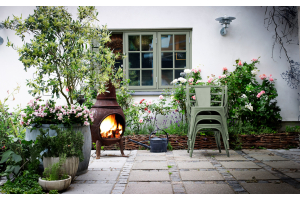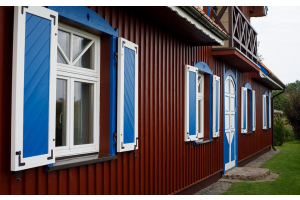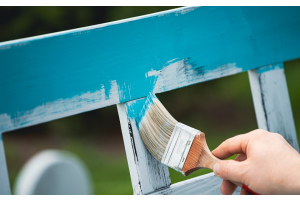- Tinted Paints
- Interior Emulsion Paint
- Interior Trim Paint
- Interior Varnishes & Oils
- Interior Furniture Paint
- Anti Mould Paint
- Anti Damp Treatment
- All Surface Primer
- Special Surface Primer
- Floor Paints & Coatings
- Exterior Paint
- Exterior Masonry Paints
- Exterior Trim Paints
- Exterior Paint Undercoat
- Exterior Oils & Varnishes
- Shed & Fence Paints
Brushing up on the Basics – Choosing the Right Paintbrushes
A bad workman blames his tools, or so the old proverb goes. But even the best workman (or workwoman) will struggle if they're using the wrong tools for the job. So before you start slapping on that expensive paint with the first paintbrush that comes to hand, make sure you brush up on the basics of choosing the right painting tools for your task.
Let's start with a simple question. What should your brush be made of?
Synthetic or Bristle Paintbrushes?
Trade 1st stock both traditional bristle paintbrushes and more modern synthetic paintbrushes – and with good reason. These brushes are both designed for use with specific types of paint for very specific tasks.
Firstly, let's talk about bristle paintbrushes. Made from a blend of natural bristles (traditionally hog bristle) and a small number of synthetic fibres, these paintbrushes have an incredibly soft tip, allowing for easy application and smooth blending.
However, there is a drawback. Bristles love water. So if you're using a water based paint, your bristle brush will absorb too much paint and start to deform and flare out – leading to sloppier painting and more wasted paint. However, oil paints and varnishes will work just fine – providing you with a smooth finish.
But what about synthetic brushes? These paintbrushes are made from synthetic filaments that are designed to pick up and spread paint uniformly across a surface. And because they're water resistant, they're perfectly safe for use with water-based paints, even if the finish isn't quite as soft as with a bristle brush.
So before you buy, take a look at your paint or varnish, and consult our advice:
Oil paints, oil stains, polyurethanes, varnishes: Choose bristle
Latex paints, acrylic paints, water-based stains: Choose synthetic
Brush Styles – Exterior Brushes, Angled Brushes and Paint Pads
Before you flood our comments section, we're well aware that a paint pad isn't technically a brush. But as it's something you'll be using to apply paint to your walls, it needs to be discussed here.
But first, let's turn back to the styles of paintbrushes that you need. Once you've decided on the type of brush, it's time to choose a style. For most interior work, our standard paint brushes will suffice. Unless you're covering a large area, in which case a paint pad will allow you to cover larger surfaces more quickly (see, we said pads were relevant).
But when it comes to outdoor work, you need to choose carefully. Rough, exterior walls can cause brushes to degrade quickly, unless you've picked a paintbrush that's rugged enough to handle punishment.
For that, we recommend our range of wall brushes and exterior masonry brushes. Available with synthetic filaments or bristles, these hard-wearing tools won't be shredded or damaged by rough surfaces, and will ensure a smooth finish. Bear in mind though, that their rugged, large designs can make detail work difficult.
Which brings us to the final brush we'll be covering today. The angled handle brush. As the name suggests, these brushes are mounted on a long "hockey stick" style handle, helping you to reach high corners and coving, and ensuring every inch of your wall is covered.
So stop ruining your rollers on the brickwork, and saturating your bristle brushes in water-based paint. Just relax, have a cuppa, read over our advice again, and choose the right brush for the job.
Your painting tasks will be completed in no time, leaving you free to check back with Trade 1st or even more advice, offers and unbeatable prices!







